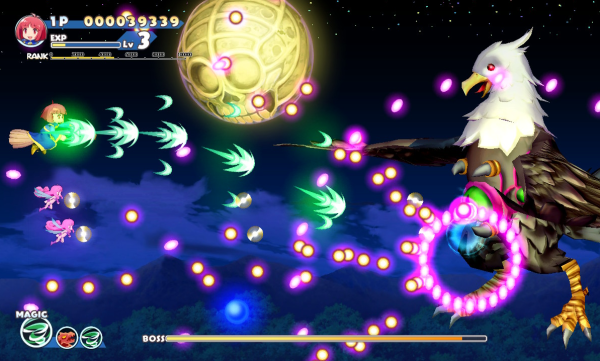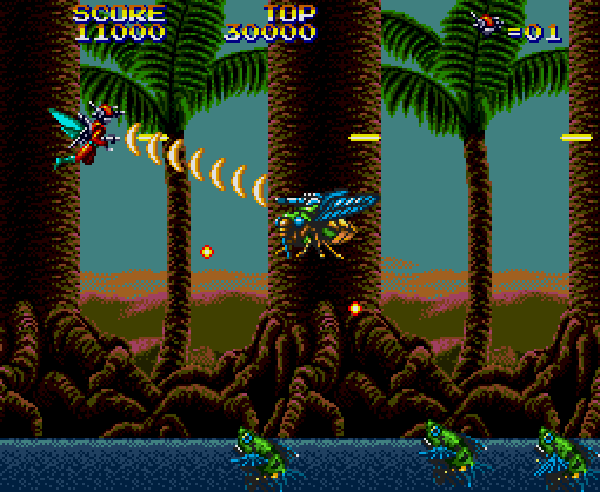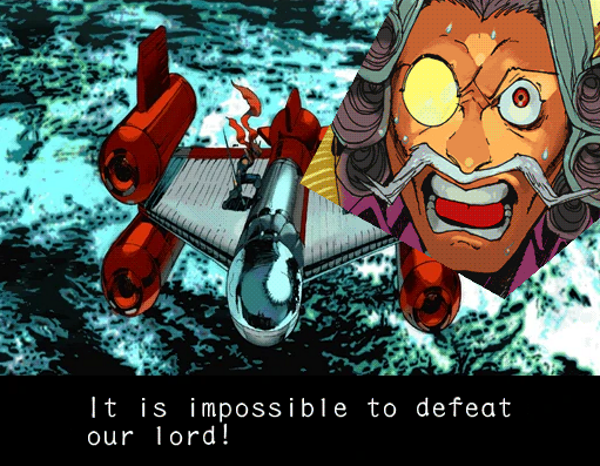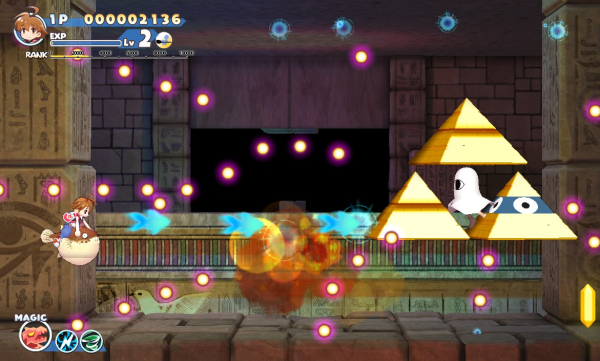Cotton Fantasy arrived this month. It’s a cute, colorful, charming little shooter in all respects, and I said as much in my full review. It has a creative power-up system, clever stage design, and a great variety of playable characters. There isn’t anything really wrong with the game apart from one glaring, grating, unfortunate design choice: it gives you unlimited, on-the-spot continues.
Upon losing all of their lives or energy, players are given the chance to continue. Some shooters boot the player back to the beginning of a level or an earlier point in that stage. But Cotton Fantasy lets players pick things right back up at the exact point where they perished, and the only penalty is the score resetting to zero.

This isn’t uncommon in shooters. It’s a feature born from arcade games, where continuing requires the player to stuff another credit in the cabinet. In that light, getting to carry on the game with no pushback or punishment seems fair—a lot of shooters or side-scrollers even dole out power-ups to reward the player’s money.
It’s not as welcome a feature in a game developed for a home system or an arcade game ported there. You’ve paid your money up front, and now it falls to the game to challenge you. That doesn’t happen when you can continue on the spot as much as you like.
Unlimited continues rarely provoke any criticism from the devoted contingent of 2-D shooter fans who play their favored genre for high scores and the accomplishment of beating a game on a single credit. They’ll argue that shooters are meant to be one-credited and played for score, though if this were true the game shouldn’t let you continue at all.
Some developers work around this. Treasure’s home versions of Radiant Silvergun and Ikaruga instituted a clever rule: players got a few continues to start, and each hour of time spent with the game granted another continue. And it worked. By the time you’d played enough to unlock free-play mode or rack up enough credits, you had also played enough to learn the patterns, master the weapons, and hone your reflexes well enough that you could make it to the last boss and its “BE PRAYING” admonitions anyway. It’s a shame that more shooters don’t apply that structure.

Were shooters always like this? No. A glance across the libraries of the Super NES, Sega Genesis, and TurboGrafx-16/PC Engine reveals a wealth of shooters and action games, both original creations and those titles based on arcade games. And I have trouble finding a single one, from Axelay to Insector X to Spriggan to Zero Wing, that allows the player the crutch of unlimited, penalty-free continues right off the bat.
When did this change? I’m not entirely sure, but I remember the problem coming to light when Strider 2 arrived on the PlayStation in the summer of 2000. GameFan, by then well into its second generation and billing itself as The Last True Enthusiast Magazine, ran a fawning review of the game, half of which was spent complaining about the Internet and sales figures instead of actually discussing the game in question. A month later, Electronic Gaming Monthly reviewed Strider 2 in somewhat positive tones but knocked it for giving the player unlimited, on-the-spot continues that, in their view “destroy this game for a wider audience.”
GameFan responded with an apoplectic editorial against those so-called gamers who dared use unlimited continues and the critics who dared point out that perhaps those continues should be limited. The incoherent, strawman-focused diatribe accused these naysayers of being dateless, out-of-shape teenage porn addicts (a strange choice of epithet, considering that GameFan had been caught with its game-reviewer pants down), but nowhere did GameFan address the implicit question of why Strider 2 should have such a continue system in the first place.

The most damning criticism of Strider 2 was found in the original Strider, thoughtfully included as a bonus with its sequel. While it was an arcade game just like Strider 2, the first Strider sent players back to an earlier checkpoint in the stage with each life lost. It was clearly done not just to toughen up the game, but to make the player figure out how to defeat that cyber-centipede, escape that burning airship, or survive that plunge down a jungle ravine. Unlimited continues would just let the player brute-force past the problem or give up entirely and start the game over—which were the only options that Strider 2 offered upon defeat.
This Strider 2 brouhaha had little long-term fallout, but it illustrated a growing divide among fans of action games and shooters: those who saw nothing wrong with unlimited continues, and those who felt they ruined any sense of balance for a game when it was taken out of the arcade and brought into the home. I’m squarely in the latter camp.
In fact, I’ll go further: unlimited, on-the-spot continues are a bad design choice even in arcade games.
I admit that I care less about high scores and one-credit runs than I do about enjoying a shooter or an action game for its design, its atmosphere, and its overall sense of intensity and reward. All of that is derailed when a game gives me two choices on continuing: carry on with zero setbacks, or start the whole game over.

Neither is as appealing as a fair, sensible design choice used in games across other genres: knock the player back just far enough to create a good sense of challenge. This simply isn’t available in a game with unlimited credits from the get-go. It's common for a fighting game to start the match over if you lose, or for an action-adventure game to begin the stage over or pick up at a checkpoint if you’re killed. Why should a 2-D shooter be any different?
And for players who want to one-credit a game, they’re not losing anything if that game adopts a measured rule for continues instead of a lazy choice between free play and famine. They can still play and replay until they can one-credit the game. That freedom is intact.
Unlimited on-the-spot of continues are, strangely enough, limiting to those players who want a thoughtful, built-in challenge. Penalty-free continues are a lazy decision resulting from the fear that the player might stop playing if they’re not adequately compensated for their money. But isn’t it the point of game design that the player should want to keep going without such carrots and sticks? That the game’s good enough to be its own continue incentive?
I don't see anything wrong with preserving unlimited credits in old arcade games, like those in Hamster's Arcade Archives series and other classic compilations. Those games should be presented exactly like they were decades ago, as historical pieces as much as actual games. But for a modern shooter like Cotton Fantasy to roll over and negate all challenge is just disappointing. Unlimited credits are an idea that stuck around just because not enough people questioned it, and that idea still arises now and then to damage to an otherwise enjoyable game.

No comments:
Post a Comment